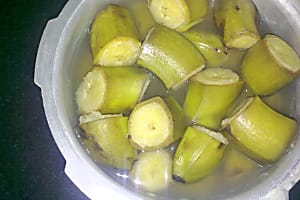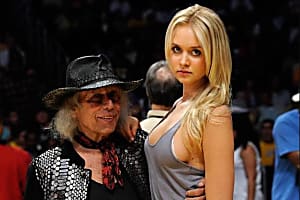NEW DELHI: Indian Air Force (IAF) commando
Jyoti Prakash Nirala will on Republic Day
tomorrow
be posthumously awarded the
Ashoka Chakra, India's highest peacetime military decoration awarded for valour, courageous action or self-sacrifice away from the battlefield.
Nirala joins a very elite IAF club - only two other IAF men have received India's highest gallantry medal, the war time equivalent of which is the
Param Vir Chakra. Here's a look at all the three IAF bravehearts who have been bestowed this honour:
*Jyoti Prakash Nirala: This brave commando made the supreme sacrifice while single-handedly shooting dead at least two Lashkar-e-Taiba (LeT) terrorists. Among those he killed in the fierce gun battle was a man named Owaid alias Obama. He was a nephew of LeT chief and 26/11 Mumbai terror mastermind Zaki-ur-Rehman Lakhvi. Nirala lost his life in this operation which took place last November in the Hajin area of Jammu and Kashmir.
The 31-year-old commando was the breadwinner of his family. He hailed from the Badladih area in Bihar's Rohtas district. He is survived by his widow Sushma, a minor daughter, ailing parents, and three unmarried sisters.
Nirala joined the IAF in 2005 and was a 'Corporal' when he was martyred. He was part of the small Garud commando batch attached to the Army's specialized counter-insurgency force, the Rashtriya Rifles, when he was martyred.
Last year in November, the Rashtriya Rifles-Garud team, acting on intelligence inputs, surrounded a house in Chandragarh village in Hajin, when they came under heavy fire from terrorists holed up inside.
"Nirala, armed with a light machine gun, displayed conspicuous bravery in confronting the terrorists and killing two to three of them despite himself being hit by bullets. All six terrorists were killed," said an official.
By virtue of being attached to the Army when he was killed, Nirala becomes the first ever IAF man officer to get the highest bravery medal for a ground combat operation.
*Rakesh Sharma: This former IAF pilot was the first, and is still the only Indian citizen to go to space. For that, Sharma, a 'Squadron Leader' when he went into space in 1984, was conferred the Ashoka Chakra that year.
Sharma was also conferred with the Soviet honour, Hero of the Soviet Union, upon his return from space.
The Patiala-born pilot joined the IAF as a cadet in 1966 at the age of 18. An alumnus of the 35th National Defence Academy, he became a test pilot in the IAF in 1970. He swiftly progressed through the ranks and was selected for the space mission on September 20, 1982. The mission was part of a joint programme between the Indian Space Research Organisation and the Soviet Intercosmos space endeavour.
On April 2, 1984, Sharma successfully entered space flying aboard the Soviet rocket Soyuz T-11. Sharma and his two Soviet team were docked at the Salyut 7 Orbital Station. Sharma spent 7 days 21 hours and 40 minutes aboard the Salyut 7 during which his team conducted scientific and technical studies which included 43 experimental sessions. His work was mainly in the fields of bio-medicine and remote sensing.
On being asked by then Prime Minister Indira Gandhi about how India looked from outer space, Sharma replied with a phrase that caught the imagination of Indians and fired their patriotism. His reply? "Saare Jahan se Achcha".
Below is a video of that iconic moment:
Nirmaljit Singh Sekhon: Flying Officer Sekhon is the only member of the IAF to be decorated with the Param Vir Chakra, war time equivalent of the Ashoka Chakra. He was posthumously awarded in 1972.
Sekhon was conferred India's highest bravery honour for his lone defence of Srinagar air base against a Pakistan air force (PAF) air raid during the Indo-Pakistan war of 1971. He was only 26 when he was martyred.
On December 14, 1971, six PAF jets surrounded the Srinagar air field and began to bomb it. Sekhon was on what was called 'Stand-By 2' duty, which means he had to be in air
within two minutes
. He lifted off in his beloved Gnat fighter craft along with Flight Lieutenant Baldhir Singh Ghuman.
Sekhon began firing at one of the PAF jets - all Sabres - ahead of him, when two other Sabres started blasting him with gun fire from behind. By then, Ghuman lost sight of Sekhon's Gnat due to poor visibility.
That didn't stop Sekhon who then began piloting his Gnat in a circle to take on the four Sabres behind him. His single-handedly downed two of the Sabres. But at one against six enemy jets, Sekhon's Gnat was eventually hit by a machine gun burst of fire.
Sekhon's plane's flight control system failed and he began to nosedive. When he tried to eject, turns out the ejection system had also been knocked out. He and his Gnat crashed into a gorge near Badgam.
Despite many search efforts by the Army and the Air Force, Sekhon's body was never found on account of the terrain where his fighter went down.
The Ludhiana-born braveheart was commissioned into the IAF on June 4, 1967 as a pilot officer. He had been with the IAF just a little over four years.
















